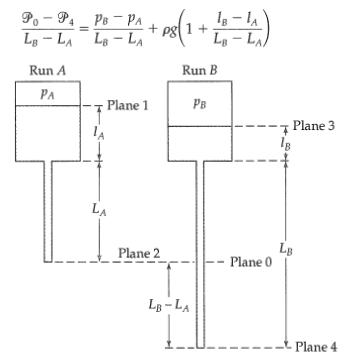End corrections in tube viscometers (Fig. 7C.1)? In analyzing tube-flow viscometric data to determine viscosity, one compares
Question:
End corrections in tube viscometers (Fig. 7C.1)? In analyzing tube-flow viscometric data to determine viscosity, one compares pressure drop versus flow rate data with the theoretical expression (the Hagen–Poiseuille equation of Eq. 2.3-21). The latter assumes that the flow is fully developed in the region between the two planes at which the pressure is measured. In an apparatus such as that shown in the figure, the pressure is known at the tube exit (2) and also above the fluid in the reservoir (1). However, in the entrance region of the tube, the velocity profiles are not yet fully developed. Hence the theoretical expression relating the pressure drop to the flow rate is not valid. There is, however, a method in which the Hagen-Poiseuille equation can be used, by making flow measurements in two tubes of different lengths, LA and LB; the shorter of the two tubes must be long enough so that the velocity profiles are fully developed at the exit. Then the end section of the long tube, of length LB - LA, will be a region of fully developed flow. If we knew the value of P0 – P4 for this region, then we could apply the Hagen-Poiseuille equation. Show that proper combination of the mechanical energy balances, written for the systems 1-2, 3-4, and 0-4 gives the following expression for P0 – P4 when each viscometer has the same flow rate. Where P0 = P0 + pgz0 Explain carefully how you would use Eq. 7Co1-1 to analyze experimental measurements. Is Eq. 7C.1-1 valid for ducts with noncircular, uniform cross section?

Step by Step Answer:






